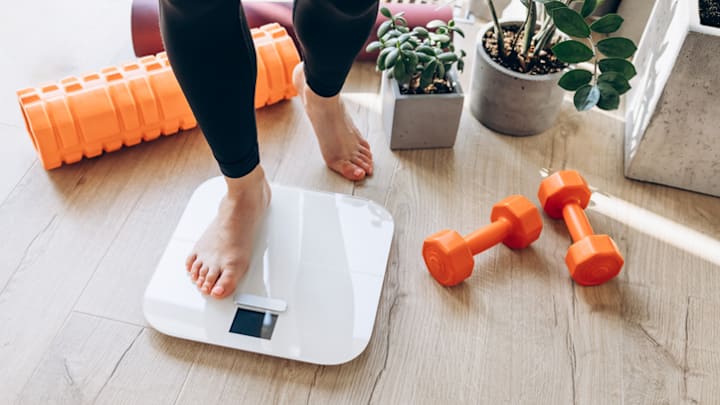Few health metrics are as contentious as body mass index, or BMI. A ratio of height to weight, BMI is used widely in the medical field but fails to differentiate between muscle and fat or account for some age- and sex-specific factors when it calculates fitness. Some health-observant people have turned to a different metric, body composition or body fat percentage, which can be tracked by a growing selection of home bioelectric impedance analysis (BIA) products.
How Do Body Comp Scales Work?
BIA devices come in the form of handgrips, waistbands, “smart scales,” and other combinations of the above. They work by sending a harmless, low-level electrical current through the body when you grasp or step on the device and then measuring resistance in your body to the current. There is less resistance when the current flows through muscle than when it meets fat, and from this, the device extrapolates your body fat percentage.
Prices range from about $50 for at-home body comp scales to thousands of dollars for the kinds used in clinical settings.
But are these measurements truly reflective of your ratio of fat to muscle?
Categories of Body Fat Percentages
The American Council on Exercise categorizes healthy body fat percentages by sex, age, and other factors. These metrics offer a more multifaceted approach than BMI.
Women’s Fat Percentage Categories
Category | Fat Is ... |
|---|---|
Essential Fat (the amount needed for proper physiological function) | 10 to 13 percent of body mass |
Athletes | 14 to 20 percent of body mass |
Fit Individuals | 21 to 24 percent of body mass |
Average Individuals | 25 to 31 percent of body mass |
Obese Individuals | More than 32 percent of body mass |
Men’s Fat Percentage Categories
Category | Fat Is ... |
|---|---|
Essential Fat (the amount needed for proper physiological function) | 2 to 5 percent of body mass |
Athletes | 6 to 13 percent of body mass |
Fit Individuals | 14 to 17 percent of body mass |
Average Individuals | 18 to 24 percent of body mass |
Obese Individuals | More than 25 percent of body mass |
You Might Also Like:
- The Origins of the Presidential Fitness Test
- 11 Ways to Motivate Yourself to Go to the Gym
- 13 Enlightening Facts About Body Fat
Are Body Comp Scales Accurate?
The accuracy of BIA devices is usually assessed by comparing them with another method called dual-energy X-ray absorptiometry (DEXA), the gold standard for measuring body composition. (Another method is the skinfold test, wherein specific points on the body are measured with calipers.) A 2021 Swiss study, in which 160 subjects had their body fat percentages measured by BIA scales against a clinical BIA method, concluded that scales were “suitable for rapid body composition assessment” in most subjects, but they weren’t as accurate as the gold-standard type. A 2020 Taiwanese study with 239 subjects concluded much the same.
That seems to be the scientific consensus: BIA device measurements are not the most accurate means of determining body composition. Their readings can be affected by the user’s body temperature, room temperature, recent liquid intake, and misapplication of equipment. Because of these limitations, they are not usually used in scientific studies or clinics to deal with a serious health condition. But, for most people just looking for insight into their fitness, they’re mostly considered acceptable.
Find More Health Stories:
